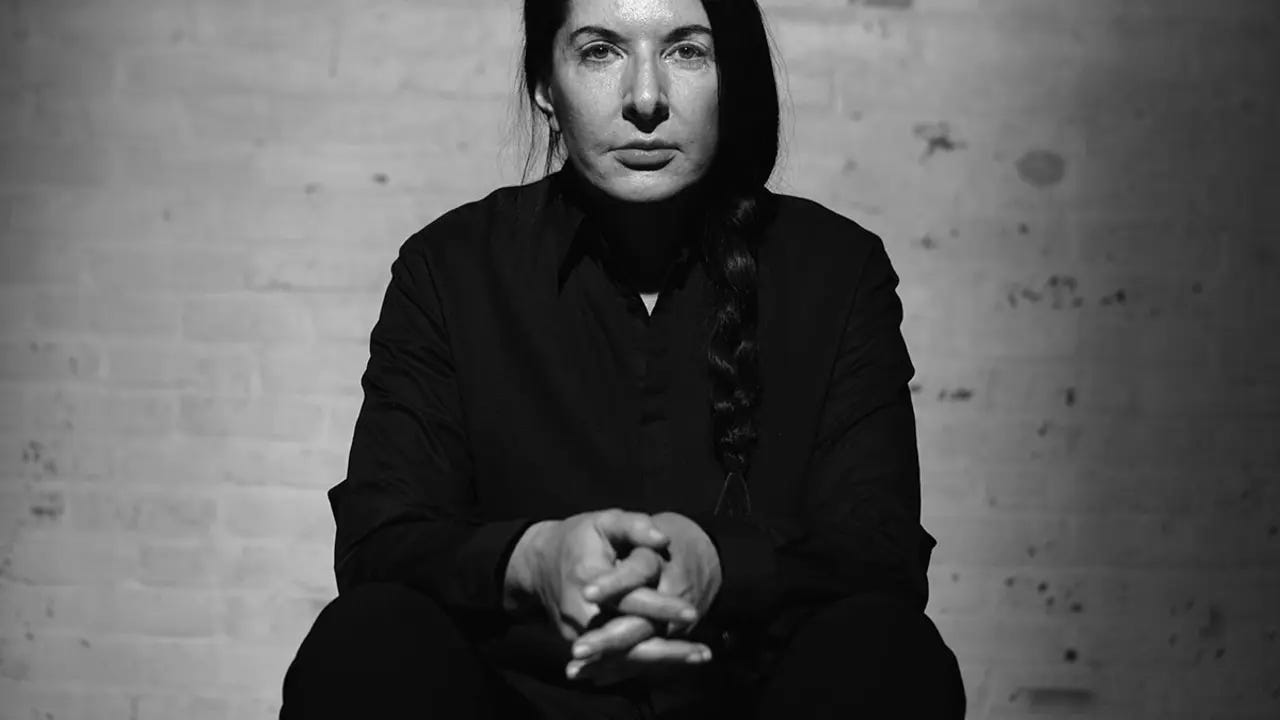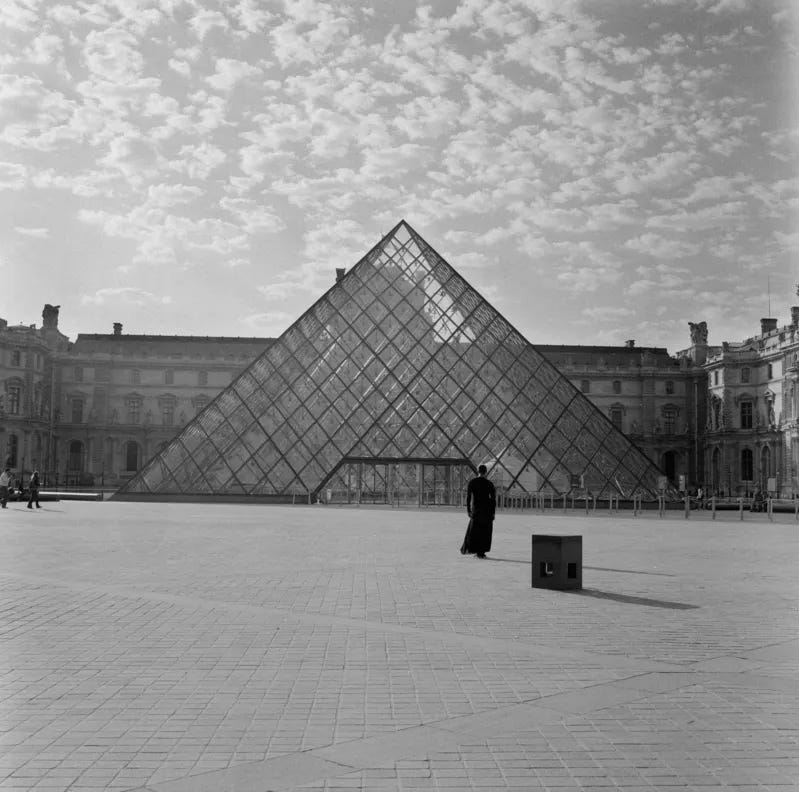GWA Newsletter: September
Your back to school reading list; what makes a powerful portrait of a woman; and all the art you need to see, read, watch and do this month
Dear Great Women Art Lovers,
I hope you are all well. Coming at you from a sunny London morning!
I’ve been resuming my weekly emails for paid subscribers. Over the past few weeks I’ve shared my summer reading list; the best art to see outside London; a spotlight on Sarah Sze; all the docs I’ve been watching, and the shows I’ve been seeing. Want in? Sign up here.
How should a powerful woman be portrayed in art? One of the best essays I’ve ever read on this fascinating discussion is Mary Beard’s Women in Power for the London Review of Books. She wrote that we have no template for what a powerful woman looks like, except that she looks rather like a man.
So when a new portrait by Theresa May by Saied Dai was unveiled last week, where she was decked out in a suit with a stance that evoked Napoleon’s, this got me thinking: do we only ever imagine strong female leaders if they are cosplaying as something they’re not? Read my column this week for The Guardian:
“Imagine a leader. What do you see? How are they presented? What are they wearing? Are they up on a platform or down on the ground? In uniform or in a dress? Are they regal and smart? Full frontal or turned to the side? If it’s a woman, what comes to mind? Last week, Theresa May’s official portrait was unveiled. I don’t know what I was expecting – but it definitely wasn’t this.
At first glance, I found her appearance cold and androgynous, the style evoking that of wartime with its muddying palette and sharp angular shapes. The more I sat with it, the more I realised how good a painting it was, with incredible psychological insight into its subject and the times in which we are living.”
A couple of weeks ago, I wrote another column asking: can we gender switch the sexist nudes dominating art history, and what happens when we do?
Photographer Hani Hape recreated Helmut Newton's overtly sexual photographs of female nudes – using naked men instead. But the results, while fascinating, sparked even more issues. So what is the answer? Can we flip something on its head, or is it about creating a fresh space, a new set of rules that benefit everyone? Read now and join in the discussion below.
“In John Berger’s highly regarded book Ways of Seeing, he closed his chapter on the nude by posing a challenge: “Choose from this book an image of a traditional nude. Transform the woman into a man. Either in your mind’s eye or by drawing on the reproduction. Then notice the violence which that transformation does. Not to the image, but to the assumptions of a likely viewer.”
It seems a simple experiment. Can we change white into black and black into white, flip the script and see it anew? It is what Berlin-based photographer Hani Hape has attempted to do in her new photographic series, Helmut Newton As Seen By Hani Hape, which features recreations of Newton’s famous – or infamous – overtly sexual photographs of female nudes, replacing them with images of men.”
We’re still on our summer break for The Great Women Artists Podcast, so in the meantime, I thought I’d trawl through the archive and give you a taster of one of my favourite episodes with Marina Abramović, who is set to become the first female artist to have a solo exhibition in the main galleries of the Royal Academy. Listen now.
Katy Hessel: What is it about the body being present that you think is so vital?
Marina Abramovic: The body is the microcosmos. By understanding your own body, you understand the world. We never actually put much attention to our body, we try everything else to do that. We are constantly busy: wake up in the morning, you open your emails, you make a phone call, you check your messages, you speak with friends, you have dinners. You never sit and do absolutely nothing. And, to me, doing absolutely nothing is the beginning of something. Because then the body starts talking to you and you really understand what it is.
The body has the ancient knowledge, it can exactly tell you with intuition what to do. We fucked up with the mind! Mind is overthinking.
KH: You were born in 1946, in Belgrade. When did you know that you wanted to use the body, or be an artist?
MA: When I was about 19, I was painting clouds. I developed all different types of clouds: the clouds were coming; the clouds were projections; the clouds were hitting the human bodies; the clouds as a black hole; and so on.
One day, I lay in the field to look at the clouds. Totally no clouds. Blue sky. And out of nowhere, two military planes arrive. They crossed like ultrasonic: “Vroom!” When they crossed, you have this incredible drawing from what they made in the air. I was looking, absolutely mesmerised, with this drawing which was first very clear, and then became more and more dissolved, until it disappeared.
This was, for me, the most spiritual experience at that time. I never went back to the studio. I never wanted to paint something two dimensional. I just got this realisation. But why? I could make drawings with the planes, I could use my body, I can use fire, water, earth, whatever, why do I have to go into the studio and be so limited.
OK! Here are 5 of your top 5. Love, Katy. Xoxo
5 Shows in the UK
The Mother & The Weaver: Art from the Ursula Hauser Collection at The Foundling Museum (from 22 Sep)
Rachel Jones: Hey Maudie at St James’s Church Piccadilly (21 Sep only)
Black Atlantic: Power, People, Resistance at the Fitzwilliam Museum (until 7 Jan)
Bring No Clothes: Bloomsbury and Fashion at Charleston Lewes (until 7 Jan)
Sarah Lucas: Happy Gas at Tate Britain (from 28 Sep)
5 Shows Overseas
Strong Women in Renaissance Italy at MFA Boston (until 7 Jan)
Njideka Akunyili Crosby: Coming Back to See Through, Again at David Zwirner, NY (from 14 Sep)
Hilary Harkness: Prisoners From the Front at PPOW, NY (from 13 Oct)
Corps à corps at Centre Pompidou, Paris (until 25 Mar 2024)
Mona Hatoum: Early Works at MCA Chicago (until 22 Oct)
5 Things to Listen to
Zadie Smith on Changes with Annie Macmanus
Claude, Marcel and the Soldier with No Name via BBC Sounds
New York in the 1970s via The Rest is History
Frida Kahlo via In Our Time
Wifedom - Mrs Orwell's Invisible Life by Anna Funder via BBC Radio 4
5 Things to Read
How Emily Wilson Made Homer Modern by Judith Thurman via the New Yorker
Louise Nevelson's Sculpture: Drag, Color, Join, Face by Julia Bryan-Wilson
Saint Francis of Assisi by The National Gallery
Eve: How The Female Body Drove 200 Million Years of Human Evolution by Cat Bohannon
My Brilliant Friend by Elena Ferrante
5 Artists You Should Know About
I am completely entranced by these illuminated canvases. Di creates dreamlike, otherworldly scenes that leave you utterly transfixed.
Weems merges theatre, photography, movement, dance, film, music, in ways I've never seen. With such elegance and consideration, she connects histories, plays with the baroque, while simultaneously addressing subjects and events happening in our present moment.
Born in Wales, John is famed for her small but mighty paintings of herself, her female sitters, and her interiors. In some paintings, it feels like we're looking at the scene through a dolls' house. I love the way she plays with curtains: the windows aren't open, but instead veiled with a sheath of lace, suddenly making our experience even more intimate.
Marisol’s way of communication was her art. She created hand-carved wooden sculptures of pop, political and religious figures, ranging from JFK, Warhol, Jesus and John Wayne. Coming of age in the era of Pop, she took from the outside world - a world fast growing up on television, who witnessed politicians, information and images through their screens.
Jansson made comics, paintings, novels, magazine covers, political cartoons, short stories greeting cards, and created the world of Moominvalley. Born in Helsinki, and studied in Paris, Jansson lived most of her life on a remote island off the coast of Finland. She turned to the Moomins in the aftermath of the Second World War, publishing The Moomins and the Great Flood (1945) and Comet in Moominland (1946)
That’s it from me! Happy GWA’ing. Thank you for reading this Substack. If you think someone else might enjoy this too, please spread the word and share this article. If you have any feedback, please comment below.


















This is one of my favourite Substacks! I look forward to seeing it pop up in my Inbox. Thank you!
It’s great seeing the Quote on "doing nothing" from Marina Abramovic in your Newsletter. I’m trying to shift my mindset around doing nothing. Because in the end, we are doing something: taking an essential and healthy break to recharge ourselves. Which in turn connects us to the wonders of our body. It’s critical for everyone, not just artists. I reflect and write a lot on this on my Substack, too. One of my favourite quotes is by Blaise Pascal, "All of humanity's problems stem from man's inability to sit quietly in a room alone."